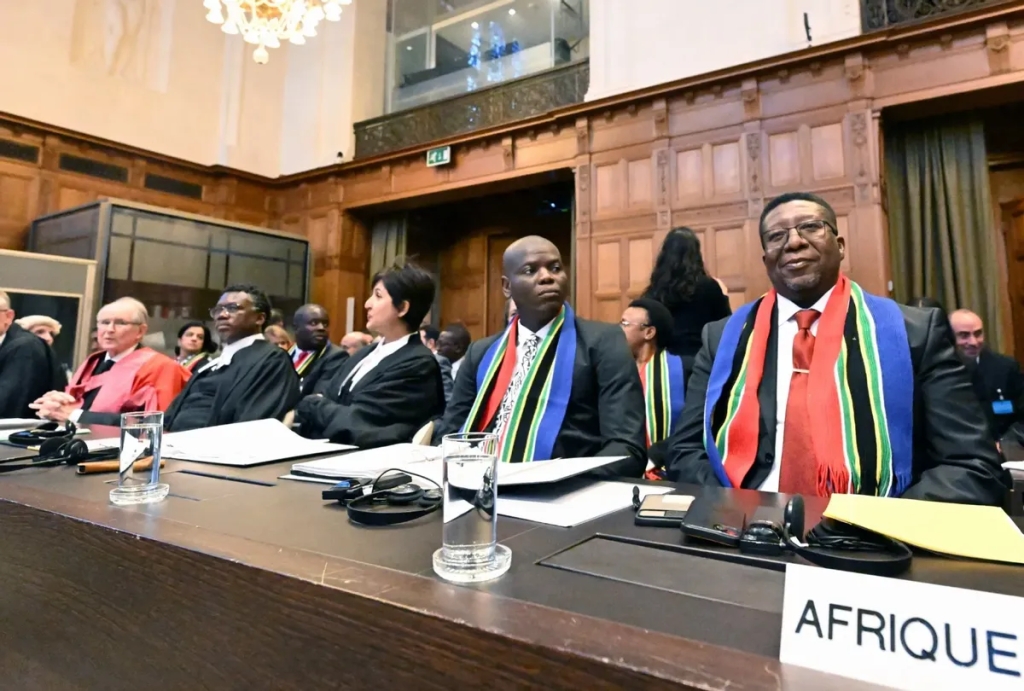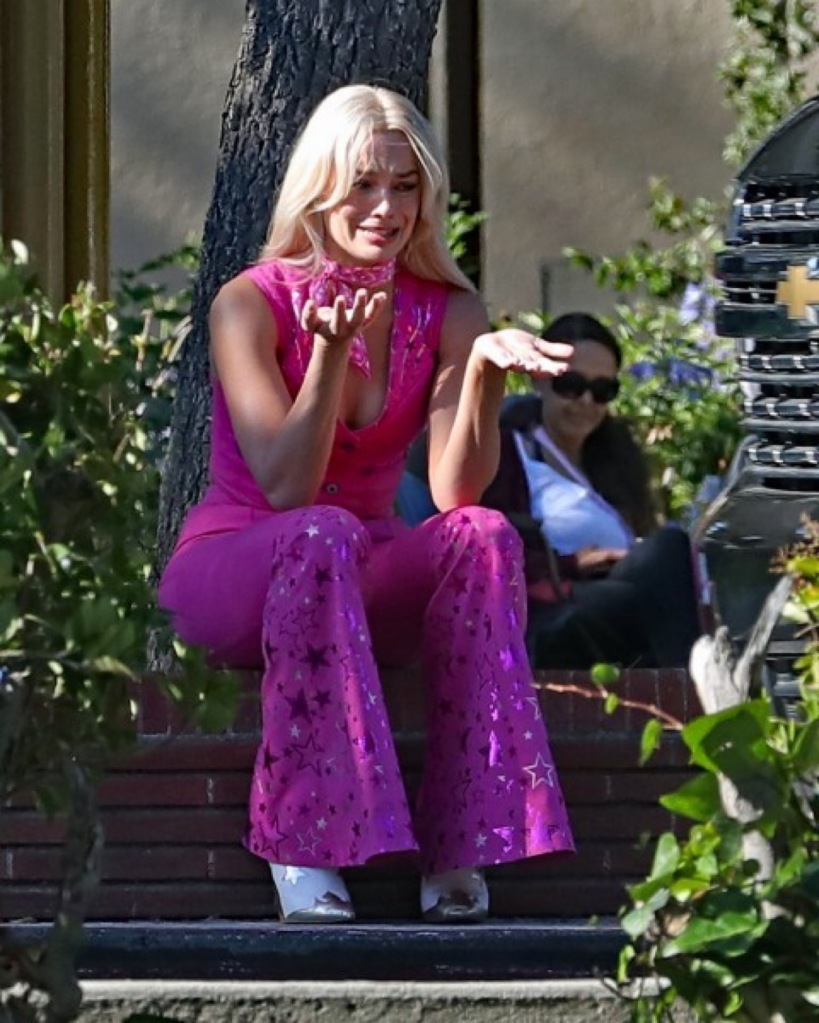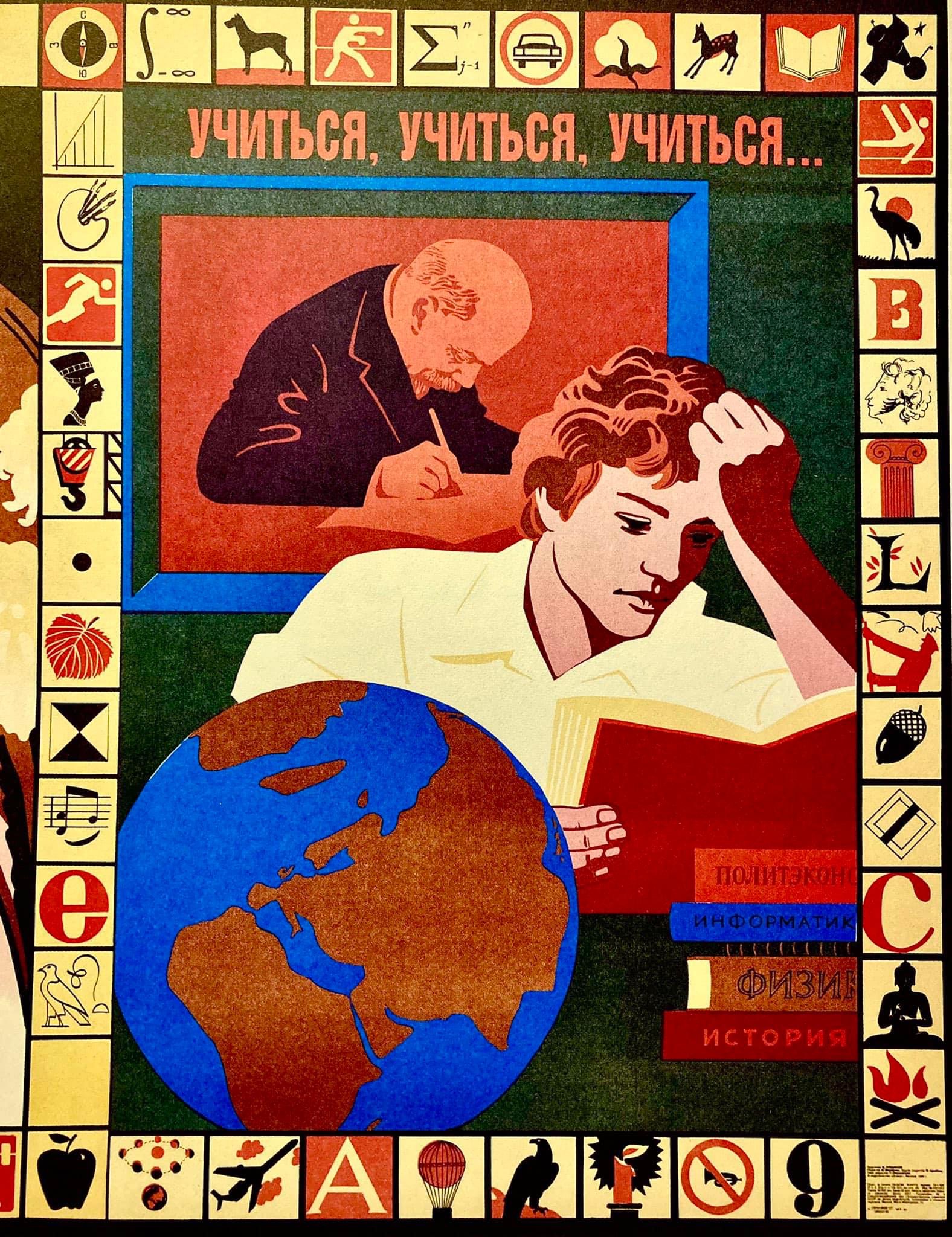
By Steve D’Arcy (29 January 2024)
This past Friday (26 January 2024), Canada’s much-reviled Liberal government waited only hours before openly, shamelessly joining other imperialist countries, most with a long history of settler-colonial genocide under their belts, in a coordinated attempt to thwart a direct order of the International Court of Justice.
The Court had only hours earlier sought to intervene in Israel’s military onslaught against Gaza, demanding that Israel take swift action to prevent genocide, insisting among other things that Israel must allow urgently needed humanitarian assistance to flow into Gaza. Canada’s government, far from expressing support for the Court’s decision, which it did not do, actually took the opposite tack: cynically attacking the most important provider of life-saving aid and emergency relief for Palestinians in Gaza.
Joining the USA, Germany and several other countries, Canada announced it would withdraw urgently needed funding from the UN relief organization, UNRWA, which is the main source of humanitarian assistance, food, and emergency shelter for the almost 2 million displaced people in Gaza, most of whom are experiencing critical, life-threatening shortages of food, drinking water, and medical care.
On Friday morning, the Court (commonly referred to as the World Court at the Hague) had issued an interim order requiring that Israel do everything in its power to prevent genocide in Gaza, and prevent or punish incitement of genocide. The timing of Canada’s intervention to thwart the Court strongly suggests that its intent was to signal, both symbolically and materially, that countries sponsoring Israel’s war would not allow a cessation of the deadly siege of Gaza before Israel has accomplished its aims, the very aims which had earlier in the day been found by the Court to be plausibly described as “genocidal.”
The reasons for the Court’s intervention on Friday morning are worth recalling in some detail.
In explaining its reasoning (hereafter cited as “ICJ”), the Court noted that, according to South Africa’s application, Israel is, with genocidal intent, “killing Palestinians in Gaza, causing them serious bodily and mental harm, inflicting on them conditions of life calculated to bring about their physical destruction, and [enacting] the forcible displacement of people in Gaza” (ICJ, p. 10). If these allegations from the South African legal team are true, then Israel is in violation of the 1948 Convention on the Prevention and Punishment of the Crime of Genocide (commonly called the “Genocide Convention”), to which both Israel and South Africa are signatories. The Convention expressly prohibits such genocidal actions and requires signatory countries to actively prevent them. It also requires countries to punish those who incite genocidal acts.
Weighing the evidence presented by South Africa, and the defence mounted by Israel, the Court determined that South Africa had made a plausible case that the Palestinian people in Gaza were at risk of genocide at the hands of Israel. In particular, the Court noted that “with respect to the right of the Palestinians in Gaza to be protected from acts of genocide and related prohibited acts,” South Africa’s evidence was sufficiently convincing that the Court found it necessary to act, and to order necessary measures to protect Gaza from the threat of genocide.
As evidence for its findings, the Court cited information provided by officials, agencies, and rapporteurs of the United Nations and the World Health Organization, most of which were brought forward initially by the South African legal team. For instance, the Court cited the statement made by a UN Emergency Relief Coordinator, Martin Griffiths, earlier in January:
Gaza has become a place of death and despair. Families are sleeping in the open as temperatures plummet. Areas where civilians were told to relocate for their safety have come under bombardment. Medical facilities are under relentless attack. The few hospitals that are partially functional are overwhelmed with trauma cases, critically short of all supplies, and inundated by desperate people seeking safety. A public health disaster is unfolding. Infectious diseases are spreading in overcrowded shelters as sewers spill over. Some 180 Palestinian women are giving birth daily amidst this chaos. People are facing the highest levels of food insecurity ever recorded. Famine is around the corner. For children in particular, the past 12 weeks have been traumatic: No food. No water. No school. Nothing but the terrifying sounds of war, day in and day out. Gaza has simply become uninhabitable. Its people are witnessing daily threats to their very existence while the world watches on.
Quoted in ICJ, p. 16.
The Court also took note of comments by Philippe Lazzarini, the Commissioner-General of UNRWA, earlier in January:
This war affected more than 2 million people — the entire population of Gaza. Many will carry lifelong scars, both physical and psychological . The vast majority, including children, are deeply traumatized.
Overcrowded and unsanitary UNRWA shelters have now become home to more than 1.4 million people. They lack everything, from food to hygiene to privacy. People live in inhumane conditions, where diseases are spreading, including among children. They live through the unlivable, with the clock ticking fast towards famine.
The plight of children in Gaza is especially heartbreaking. An entire generation of children is traumatized and will take years to heal. Thousands have been killed, maimed, and orphaned. Hundreds of thousands are deprived of education. Their future is in jeopardy, with far-reaching and long-lasting consequences.
Quoted in ICJ, p. 17.
The Court also considered numerous statements by Israeli officials at the very highest level which appeared to be explicit declarations of the regime’s genocidal intent in Gaza. Two (of many) examples will suffice to convey their basic character. The first is from Yoav Gallant, Israel’s Minister responsible for the regime’s use of Armed Force. The day after announcing that Gaza would be cut off from all electricity, food, fuel, and medical supplies, Gallant declared:
I have released all restraints. You saw what we are fighting against. We are fighting human animals. This is the ISIS of Gaza. This is what we are fighting against. Gaza won’t return to what it was before. There will be no Hamas. We will eliminate everything. If it doesn’t take one day, it will take a week, it will take weeks or even months, we will reach all places.
Quoted in ICJ, p. 17.
A second example noted by the Court is the statement of explicit genocidal intent by the President of Israel, Isaac Herzog, who declared openly that the aim of the war is to “break the backbone” of “an entire nation,” explicitly including the entirety of non-combatant Palestinian civilians:
Unequivocally it is an entire nation out there that is responsible. It is not true this rhetoric about civilians not aware, not involved. It is absolutely not true. They could have risen up. They could have fought against that evil regime which took over Gaza in a coup d’état. But we are at war. We are at war. We are at war. We are defending our homes. We are protecting our homes. That’s the truth. And when a nation protects its home, it fights. And we will fight until we’ll break their backbone.
Quoted in ICJ, pp. 17-18.
In light of the systematic destruction of Gaza, and the catastrophic level of death, disease, trauma and extreme hunger, the Court stated that it “considers that the civilian population in the Gaza Strip remains extremely vulnerable. It recalls that the military operation conducted by Israel after 7 October 2023 has resulted … in tens of thousands of deaths and injuries and the destruction of homes, schools, medical facilities and other vital infrastructure, as well as displacement on a massive scale” (ICJ, p. 22). Accordingly, the Court found that “that there is urgency, in the sense that there is a real and imminent risk that irreparable prejudice will be caused to the rights found by the Court to be plausible” (ICJ, p. 22), namely, “the right to be protected from genocide and related prohibited acts” (ICJ, p. 21).
On these grounds, the Court judged that it was obligated to intervene, by issuing six provisional orders, which it sets out as follows:
- The State of Israel shall, in accordance with its obligations under the Convention on the Prevention and Punishment of the Crime of Genocide, in relation to Palestinians in Gaza, take all measures within its power to prevent the commission of all [prohibited] acts…, in particular:
- killing members of the group;
- causing serious bodily or mental harm to members of the group;
- deliberately inflicting on the group conditions of life calculated to bring about its physical destruction in whole or in part; and
- imposing measures intended to prevent births within the group;
- The State of Israel shall ensure with immediate effect that its military does not commit any acts described in point 1 above [namely, killing members of the group, etc.];
- The State of Israel shall take all measures within its power to prevent and punish the direct and public incitement to commit genocide in relation to members of the Palestinian group in the Gaza Strip.
- The State of Israel shall take immediate and effective measures to enable the provision of urgently needed basic services and humanitarian assistance to address the adverse conditions of life faced by Palestinians in the Gaza Strip;
- The State of Israel shall take effective measures to prevent the destruction and ensure the preservation of evidence related to allegations of acts within the scope of Article II and Article III of the Convention on the Prevention and Punishment of the Crime of Genocide against members of the Palestinian group in the Gaza Strip;
- The State of Israel shall submit a report to the Court on all measures taken to give effect to this Order within one month as from the date of this Order.
— ICJ, pp. 24-26.
Now, the most notable of these provisions are the initial ones: first, that Israel is ordered to take all measures in its power to prevent the commission of genocidal acts, and second, that in particular Israel must ensure that its military does not engage in “killing members of the group [Palestinians in Gaza],” nor “causing serious bodily or mental harm to members of the group,” nor “deliberately inflicting on the group conditions of life calculated to bring about its physical destruction in whole or in part” (ICJ, p. 23).
These requirements seem to go beyond the one thing the Court did not mention, a “ceasefire.” In a ceasefire scenario, Israel could certainly continue “deliberately inflicting on the group conditions of life calculated to bring about its physical destruction in whole or in part,” notably by continuing its total siege of Gaza, its denial to Gaza of desperately needed food, drinkable water, energy, and medicine. The Court bluntly required Israel’s regime to stop killing and injuring people in Gaza, and to stop inflicting conditions of hunger, thirst and disease on them. Even so, it is fair to criticize the Court for leaving the issue of a ceasefire out of its decision: its omission leave a wider range of options open to those hoping to thwart its aims in issuing the order, the protection Gaza from the threat of genocide.
Israel’s response to the Court’s initial findings (of plausibility) and provisional orders, in public, has been to dismiss the Court. Netanyahu, the regime’s Prime Minister, stated in a video response in English that Israel had “a sacred commitment to continue” its military onslaught against Gaza, which he described as defensive. Netanyahu cited as justification for his defiance of the Court’s order to cease killing people in Gaza Israel’s “inherent right to defend itself.” The charge of genocide, he claimed, is “outrageous.”
But — as noted at the outset, above — the regime’s public repudiation of the Court’s findings and provisional orders was bolstered by a simultaneous multilateral response undertaken by Israel and its main sponsor states, including Canada. It took the form of a morally shocking attempt to block efforts by the United Nations Relief and Works Agency (UNRWA) to provide life-saving humanitarian assistance to Palestinians in Gaza. As noted above, UNRWA is the most important provider of humanitarian assistance to Gaza, by far. Currently at least 1.3 million residents of Gaza are living in camps operated by UNRWA, which is trying to provide minimal shelter to those displaced by the devastating military onslaught of the past 100+ days.
The two-phased multilateral attack on UNRWA unfolded very quickly, over a period of hours, timed carefully to serve as an immediate, very high-profile rejoinder to the Court’s ruling. (Among other things, the timing was apparently an offer of cover to racist news media outlets that wanted to minimize coverage of the ICJ ruling.)
Israel initiated the first phase by issuing an accusation on Friday morning, which it said was based on “interrogations of militants” (and here it would be irresponsible not to mention the documentation by Israeli human rights organization B’Tselem, which shows that Israel security officials use torture and abuse during interrogations). Israel alleged that, of the 30,000 employees of UNRWA (13,000 of whom work in Gaza), as many as a dozen may have participated in or somehow assisted the 7 October armed attack on Israel, which illegally killed 766 civilians, in addition to the 373 Israeli armed combatants who were killed during the battle, according to numbers published by the Israeli government. These accusations of criminal conduct against 12 UNRWA employees may or may not be substantiated in the coming weeks, but UNRWA fired all of the (surviving) individuals in any case, simply on the basis that an accusation had been made against them.
The second phase of the multilateral response to the Court’s ruling involved at least ten countries taking coordinated action against UNRWA to starve it of the funds it needs to operate in Gaza, using Israel’s accusations against the 12 UNRWA employees as pretext. Predictably, the list of countries participating mostly reads like a “who’s who” of the history of colonial genocide: Canada, Germany, USA, the Netherlands, Australia, the United Kingdom, Italy, France, Finland, and Switzerland. The Gang of Ten countries announced in tandem that they would cut off all their funding to UNRWA, amounting to many tens of millions of dollars, deliberately deepening the risk to Gaza residents of genocide, on the very day that the World Court attempted to lessen that risk. Justin Trudeau’s regime in Canada eagerly joined in, seemingly without remorse, indifferent (or worse) to the catastrophe it was actively fueling.
Now, obviously one expects this sort of behaviour from the government of Germany. For 150 years, Germany has repeatedly committed genocide, and can fairly be described as having a longstanding addiction to war crimes and genocides, most notably the Herero and Namaqua genocide and the Holocaust. The USA’s role, too, can surprise no one: Israel is first and foremost a US client state, and the two regimes collaborate and coordinate their activities in the region at every level, militarily and diplomatically, usually in the mode of “good-cop/bad-cop” role-play, with the US green-lighting Israel’s actions without having officially to admit responsibility for them. The idea of a multilateral attack on UNRWA to push back against the Court’s provisional measures may or may not have been cooked up in Washington, but one cannot even imagine that they might have hesitated before going “all in” on adopting it. The Netherlands, too, seems incapable of shaking its old genocide habit, and has exhibited in shameful ways its refusal to stand firm against genocide as recently as the 1990s. And what can one say about the UK, whose single-minded devotion to colonial genocide wreaked havoc on humankind and cursed the globe with its blood-soaked Empire for centuries?
Those who know the Canadian state — including its long history of genocidal violence against indigenous people — will be likewise unsurprised by Canada’s participation in the attack on UNRWA and its defiance of the ICJ. But even the unsurprising can still shock: in this case it can, and really it should evoke a dropped jaw of disbelief. How dare they?! Where do they get the audacity to so brazenly attempt to bully the World Court into accepting the impunity of those who scoff in private, while feigning ambivalence in public, about the scope of the Court’s authority?
It is sometimes said, misleadingly, that the World Court has no capacity to enforce its orders. What people mean is that the body charged with enforcement by the UN system, the Security Council, is permanently burdened with members from the most lawless of rogue states, most notably the USA, whose defiance of the Court may indeed go unpunished. But our commitment to basic decency, and our embattled sense of justice, is more than sufficient to point our fingers accusingly at the governments of Canada, Germany, the USA, the UK, France, Italy, Israel, and the rest. We know perfectly well that these states are led by criminals.
The humane indignation against injustice animating South Africa’s conduct only underlines the moral bankruptcy of these regimes who act continually to prop up criminality and brazen violence and to insulate its perpetrators from accountability.
Courts will not stop them, certainly. But broadening and escalating the popular struggle, in every corner of the world, offers some hope that we can do what our rulers obviously refuse to do: stop the killing, bring the criminals to justice, and enforce the Court’s order to prevent the genocide.






